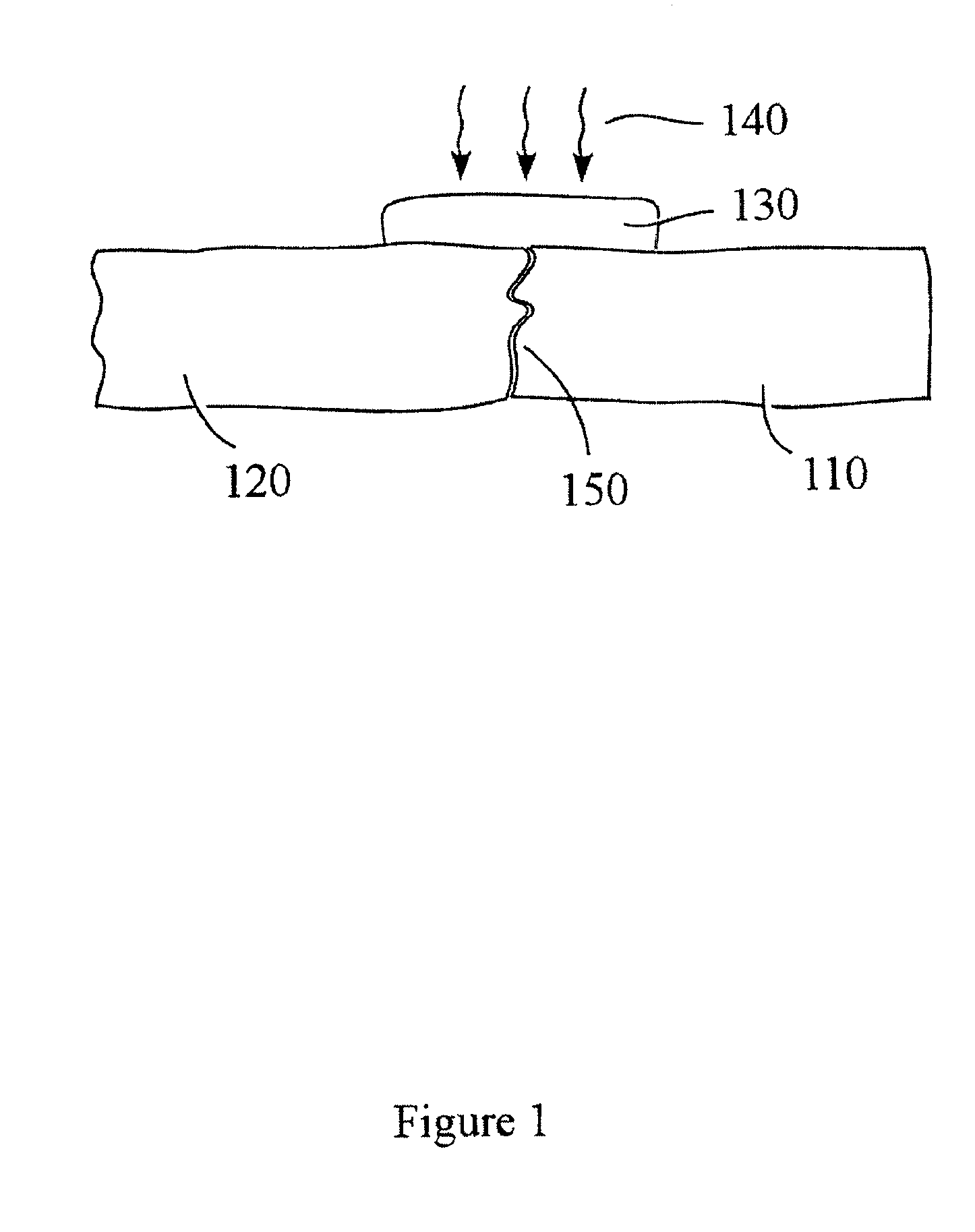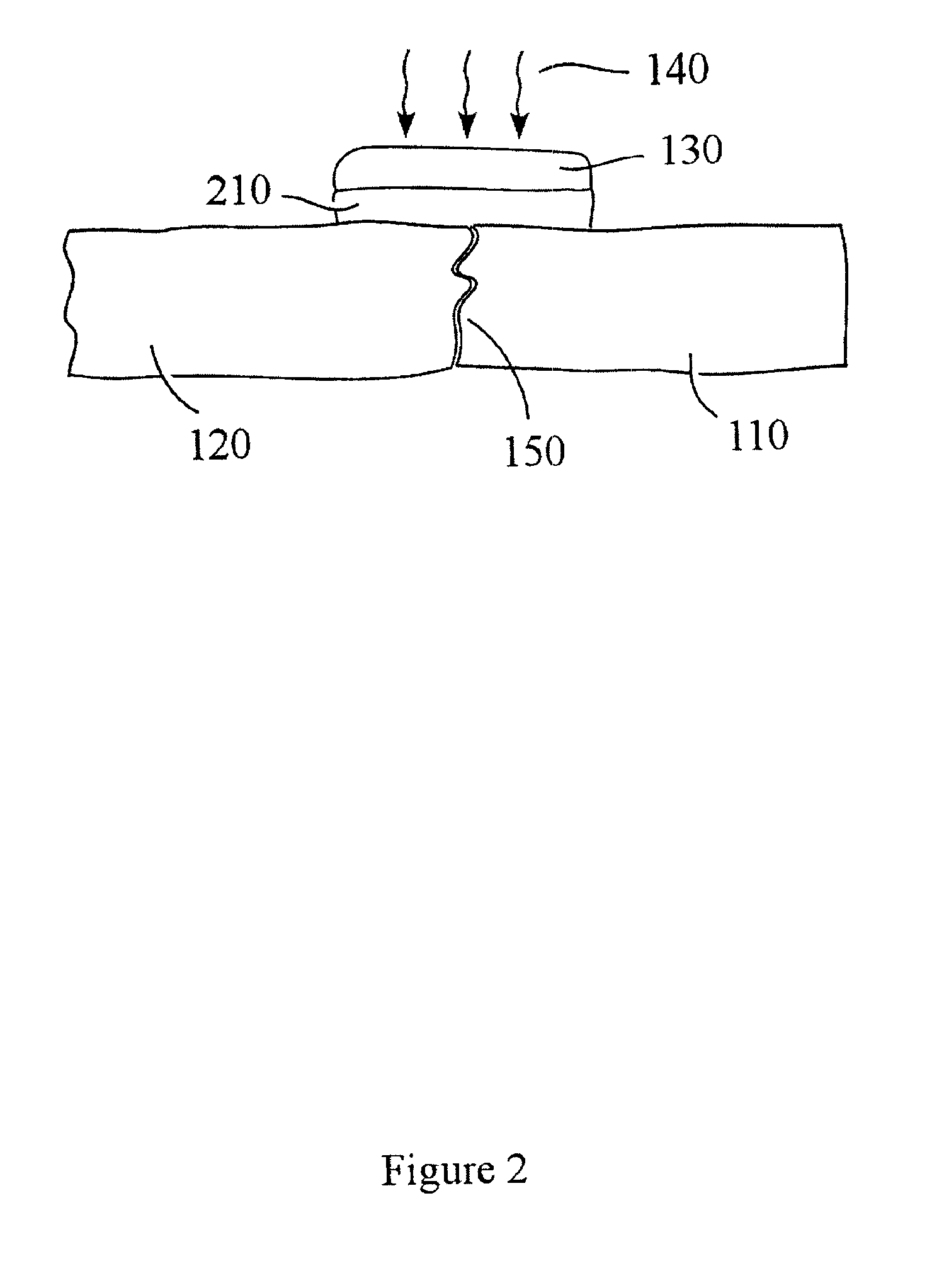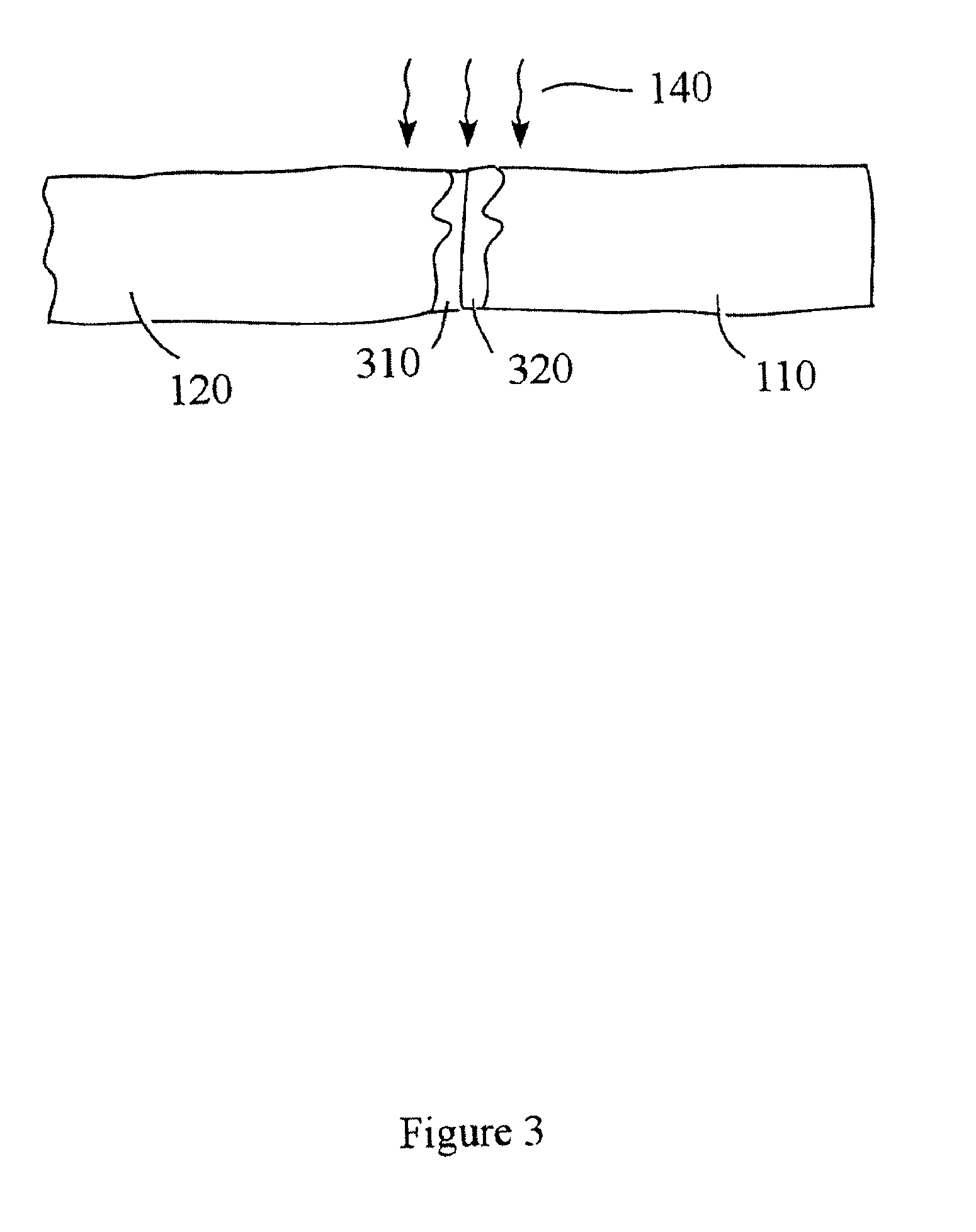Light energized tissue adhesive
a tissue adhesive and light-energizing technology, applied in biocide, synthetic polymeric active ingredients, peptide/protein ingredients, etc., can solve the problems of high level of surgeon skill, pernicious effects, and methods that have not yet gained clinical acceptance, so as to reduce treatment time, eliminate peripheral tissue damage, and eliminate the effect of peripheral tissue damag
- Summary
- Abstract
- Description
- Claims
- Application Information
AI Technical Summary
Benefits of technology
Problems solved by technology
Method used
Image
Examples
example 1
Descending aorta sections were collected from juvenile pigs and stored frozen. Prior to use the tissue, contained in a sealed bag, was thawed 15-20 min in a water bath at room temperature (23° C.). The thawed aorta were cut with a standard single-edged razor blade into 1 cm×1 cm coupons. Excess fascia and loose tissue were removed. The coupons were transferred to a PBS 1× solution that was placed in an ice bath until use.
The coupons were cut into two 0.5 cm×1 cm pieces and assembled in a butt joint configuration. The incision was first warmed with the laser operating in the 1.4-1.5 micron wavelength range. Laser power density was approximately 10 W / cm2. A minute quantity of medical grade cyanoacrylate is applied sparingly to the apposed tissue edges and thick collagen gels or films were then applied directly to the cut surfaces intended for the joint and subsequently exposed to the laser at a controlled temperature of 55° C. The laser beam was scanned over the entire gel or film for...
example 2
Several ⅜″ diameter articular cartilage plugs were cut with a tubular harvester in the vicinity of bovine carpel joints. The defects were warmed with the laser operating in the 1.4-1.5 micron wavelength range. Laser power density was approximately 10 W / cm2. Thick collagen-based gels were immediately troweled into the defect by a spatula or dispensed with a microsyringe. Care was taken to apply the collagen gel to all surfaces of the implant prior to insertion into the defect. In most cases the implant surfaces were exposed to the laser to liquefy the collagen-based gel then immediately transferred to the defect. The surface temperature was controlled in the 55-60° C. range. After implant placement additional gel was applied and melted with the laser at temperature controlled in the 55-60° C. range. Rapid cooling was observed once the laser beam was withdrawn and the solder formed a solid and adherent seal around the implant. Lift and torque tests were performed immediately following...
PUM
| Property | Measurement | Unit |
|---|---|---|
| concentration | aaaaa | aaaaa |
| concentration | aaaaa | aaaaa |
| concentration | aaaaa | aaaaa |
Abstract
Description
Claims
Application Information
 Login to View More
Login to View More - R&D
- Intellectual Property
- Life Sciences
- Materials
- Tech Scout
- Unparalleled Data Quality
- Higher Quality Content
- 60% Fewer Hallucinations
Browse by: Latest US Patents, China's latest patents, Technical Efficacy Thesaurus, Application Domain, Technology Topic, Popular Technical Reports.
© 2025 PatSnap. All rights reserved.Legal|Privacy policy|Modern Slavery Act Transparency Statement|Sitemap|About US| Contact US: help@patsnap.com



